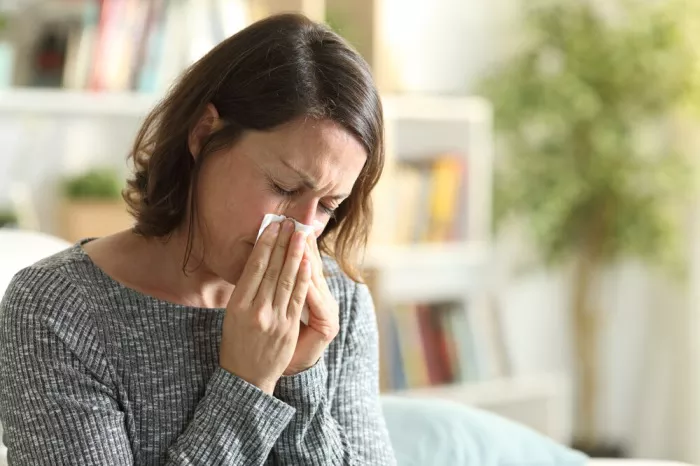Vitamin E is a fat-soluble vitamin that is essential for maintaining healthy skin, eyes, and immune system. It is found in a variety of foods, including nuts, seeds, vegetable oils, and leafy greens. However, some individuals may develop an allergy to vitamin E, which can cause a range of symptoms, such as skin rash, itching, and difficulty breathing. In this article, we will provide a comprehensive guide on how to treat vitamin E allergy, including the causes, symptoms, and treatment options.
Causes of Vitamin E Allergy
Vitamin E allergy is a rare condition that occurs when the immune system mistakenly identifies vitamin E as a harmful substance and triggers an allergic reaction. The exact cause of vitamin E allergy is not fully understood, but it may be related to a genetic predisposition or exposure to vitamin E through diet or supplements.
Studies have shown that individuals with a history of atopic dermatitis (eczema) or other allergies may be more likely to develop vitamin E allergy. Additionally, some studies have suggested that exposure to vitamin E through supplements or skincare products may increase the risk of developing an allergy to vitamin E.
Symptoms of Vitamin E Allergy
The symptoms of vitamin E allergy can vary from mild to severe and may include:
Skin Rash: A skin rash is a common symptom of vitamin E allergy, which may be accompanied by itching, redness, and swelling. The rash may appear as small bumps or patches on the skin and may be localized or widespread.
Hives: Hives are raised, itchy bumps on the skin that may be triggered by vitamin E allergy. Hives may appear suddenly and may disappear just as quickly.
Difficulty Breathing: In severe cases, vitamin E allergy can cause difficulty breathing, which may be life-threatening. This may be accompanied by wheezing, chest tightness, and shortness of breath.
Nausea and Vomiting: Some individuals with vitamin E allergy may experience nausea and vomiting, which may be accompanied by abdominal pain and diarrhea.
Anaphylaxis: In rare cases, vitamin E allergy can cause anaphylaxis, which is a life-threatening allergic reaction. Anaphylaxis may cause symptoms such as swelling of the face, lips, and tongue, difficulty breathing, and a rapid heartbeat. Anaphylaxis requires immediate medical attention.
Treatment Options for Vitamin E Allergy
The treatment options for vitamin E allergy may vary depending on the severity of the symptoms and the underlying cause of the allergy. Some of the treatment options include:
Avoidance: The most effective way to treat vitamin E allergy is to avoid exposure to vitamin E. This may involve avoiding foods that contain vitamin E, such as nuts, seeds, and vegetable oils, as well as supplements and skincare products that contain vitamin E.
Antihistamines: Antihistamines are medications that can help relieve the symptoms of vitamin E allergy, such as itching and skin rash. Antihistamines work by blocking the release of histamine, which is a chemical that is released by the immune system in response to an allergen.
Corticosteroids: Corticosteroids are medications that can help reduce inflammation and swelling caused by vitamin E allergy. Corticosteroids work by suppressing the immune system and reducing the production of inflammatory chemicals.
Epinephrine: In severe cases of vitamin E allergy, epinephrine may be necessary to treat anaphylaxis, which is a life-threatening allergic reaction. Epinephrine works by narrowing the blood vessels and opening up the airways, which can help improve breathing and reduce the risk of complications.
Avoidance of Vitamin E
The most effective way to treat vitamin E allergy is to avoid exposure to vitamin E. This may involve reading food labels carefully and avoiding foods that contain vitamin E, such as nuts, seeds, and vegetable oils. It is also important to avoid supplements and skincare products that contain vitamin E, unless they have been specifically recommended by a healthcare professional.
If you are uncertain about whether a product contains vitamin E, it may be helpful to contact the manufacturer or consult with a healthcare professional. Additionally, it is important to inform healthcare providers and caregivers about your allergy to vitamin E so that they can take appropriate precautions.
Antihistamines for Vitamin E Allergy
Antihistamines are medications that can help relieve the symptoms of vitamin E allergy, such as itching and skin rash. Antihistamines work by blocking the release of histamine, which is a chemical that is released by the immune system in response to an allergen.
There are several types of antihistamines available, including first-generation antihistamines and second-generation antihistamines. First-generation antihistamines, such as diphenhydramine (Benadryl), may cause drowsiness and other side effects. Second-generation antihistamines, such as loratadine (Claritin) and cetirizine (Zyrtec), are less likely to cause drowsiness and may be preferred for long-term use.
Corticosteroids for Vitamin E Allergy
Corticosteroids are medications that can help reduce inflammation and swelling caused by vitamin E allergy. Corticosteroids work by suppressing the immune system and reducing the production of inflammatory chemicals.
Corticosteroids may be administered orally, topically, or by injection, depending on the severity of the symptoms and the underlying cause of the allergy. Oral corticosteroids, such as prednisone, may be used for short-term treatment of severe symptoms, while topical corticosteroids, such as hydrocortisone, may be used for mild to moderate symptoms. Injections of corticosteroids may be used for severe symptoms that do not respond to other treatments.
Epinephrine for Vitamin E Allergy
In severe cases of vitamin E allergy, epinephrine may be necessary to treat anaphylaxis, which is a life-threatening allergic reaction. Epinephrine works by narrowing the blood vessels and opening up the airways, which can help improve breathing and reduce the risk of complications.
Epinephrine is usually administered by injection and requires immediate medical attention. Individuals who have a history of severe allergic reactions should carry an epinephrine auto-injector with them at all times and know how to use it in case of an emergency.
Prevention of Vitamin E Allergy
The best way to prevent vitamin E allergy is to avoid exposure to vitamin E. This may involve reading food labels carefully and avoiding foods that contain vitamin E, such as nuts, seeds, and vegetable oils. It is also important to avoid supplements and skincare products that contain vitamin E, unless they have been specifically recommended by a healthcare professional.
In addition to avoiding vitamin E, it is also important to maintain a healthy diet and lifestyle to support a healthy immune system. This may involve eating a balanced diet that is rich in fruits, vegetables, and whole grains, as well as engaging in regular physical activity and getting enough sleep.
Conclusion
Vitamin E allergy is a rare condition that can cause a range of symptoms, such as skin rash, hives, and difficulty breathing. The treatment options for vitamin E allergy may include avoidance, antihistamines, corticosteroids, and epinephrine, depending on the severity of the symptoms and the underlying cause of the allergy. It is important to consult a healthcare professional if you suspect that you may have a vitamin E allergy, as they can provide a proper diagnosis and recommend the most appropriate treatment plan. Additionally, it is important to take steps to prevent vitamin E allergy by avoiding exposure to vitamin E and maintaining a healthy diet and lifestyle.
[inline_related_posts title=”You Might Be Interested In” title_align=”left” style=”list” number=”6″ align=”none” ids=”4914,4882,4876″ by=”categories” orderby=”rand” order=”DESC” hide_thumb=”no” thumb_right=”no” views=”no” date=”yes” grid_columns=”2″ post_type=”” tax=””]
































